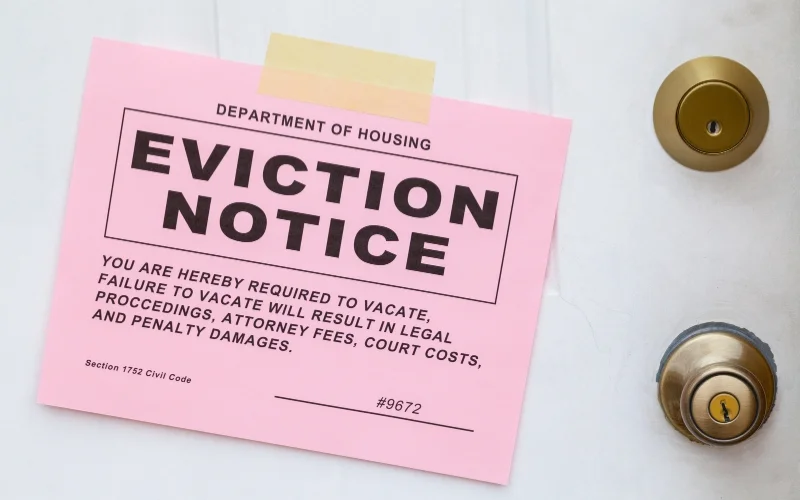
Are you a landlord in Alabama? Facing the daunting task of evicting a tenant? Wondering how much do evictions cost in Alabama? Don’t worry, we’ve got you covered.
This article will guide you through the eviction process in Alabama, providing you with the knowledge you need to navigate this challenging situation. From serving an eviction notice to obtaining a writ of restitution, we’ll explain each step and the responsibilities involved.
By familiarizing yourself with the process, you can approach eviction with confidence and protect your rights as a landlord.
Eviction Notice Requirements
To initiate the eviction process in Alabama, you must serve your tenant with a seven-day eviction notice. This notice serves as a warning and gives the tenant a chance to either pay the rent, cure a lease violation, or vacate the premises.
The specific type of notice you serve depends on the reason for eviction. Rent Demand Notice gives the tenant seven days to pay or quit, Lease Violation Notice gives them seven days to cure or quit, and Unconditional Notice to quit allows no opportunity to cure and gives them seven days to vacate.
It’s important to comply with Alabama laws on eviction notice requirements to ensure a smooth process. Remember, eviction costs can vary depending on the complexity of the case, so it’s advisable to consult Alabama eviction laws and consider hiring an eviction attorney if necessary.

Filing an Eviction Lawsuit
To file an eviction lawsuit in Alabama, you’ll need to submit a Statement of Claim for Eviction/Unlawful Detainer to the court located in the same county as the leased property. This document serves as your formal complaint against the tenant and initiates the legal eviction process.
Along with the statement, you’ll also need to pay a court filing fee.
Once you have filed the lawsuit, the court will serve the tenant with a summons, which informs them of the legal action being taken against them. The summons can be delivered by a sheriff, constable, or process server, and must comply with the Alabama Rules of Civil Procedure.
It’s important to follow all the necessary steps and requirements to ensure a smooth and successful eviction process.
Serving the Summons
When serving the summons in Alabama, you’ll need to ensure compliance with the Alabama Rules of Civil Procedure. The summons can be delivered by the sheriff, constable, or a process server. It must be hand-delivered to the tenant or given to any person residing in the unit and mailed to the tenant’s address.
Alternatively, it can be posted on the front door of the property and mailed to the tenant’s address. These methods of delivery must adhere to the Alabama Rules of Civil Procedure. It’s important to follow these rules to ensure that the tenant is properly served with the summons and that the eviction process can proceed smoothly.

Tenant’s Response and Court Hearing
After the summons has been properly served, you, as the tenant, must file an answer and prepare for the upcoming court hearing.
It’s essential to respond to the eviction lawsuit by filing an answer within the specified timeframe. In Alabama, you typically have seven days to file your answer with the court. Your answer should address the claims made by the landlord and present any defenses or counterclaims you may have. Make sure to include all relevant information and supporting evidence.
Once you have filed your answer, you should start preparing for the court hearing. Gather any documents or witnesses that can support your case and be ready to present your side of the story to the judge. It’s crucial to be well-prepared and articulate during the hearing to increase your chances of a favorable outcome.
Execution of the Eviction Process
Once the court issues a writ of restitution, you must bring it to the sheriff’s office to schedule and pay for the eviction. The writ of restitution authorizes the sheriff to remove the tenant from the property.
At the sheriff’s office, you’ll need to provide them with a copy of the writ and pay the necessary fees for the eviction process. The sheriff will then schedule a date and time for the eviction to take place.
On the scheduled day, the sheriff will post the writ of restitution on the tenant’s unit, notifying them of the eviction. The tenant will have a final opportunity to remove themselves and their possessions from the property.
If the tenant refuses to leave, the sheriff will return to forcibly remove them. It’s important to follow the proper procedures and work with the sheriff’s office to ensure a smooth execution of the eviction process.

Enforcement of the Writ of Possession: Regaining Control of the Property
Upon obtaining the writ of possession, the landlord must coordinate with law enforcement to enforce the court order. This phase involves physically removing the tenant from the property, allowing the landlord to regain control. It is imperative for landlords to follow the law meticulously during this stage to avoid potential legal repercussions.
Understanding Tenant Rights
Throughout the eviction process, tenants have rights that must be respected. It is crucial for landlords to adhere to the legal requirements and timelines to ensure a fair and lawful eviction. Tenants have the right to receive proper notice and to present their case in court. Additionally, landlords must avoid engaging in “self-help” eviction methods, such as changing locks or shutting off utilities, as these actions are illegal and can lead to legal consequences for the landlord.
Seeking Legal Guidance
Given the complexity of the eviction process, both landlords and tenants are strongly advised to seek legal counsel. Attorneys specializing in landlord-tenant law can offer guidance tailored to specific situations, ensuring that all parties comprehend their rights and responsibilities. Legal professionals can assist in navigating the court system and presenting a strong case, whether one is a landlord seeking eviction or a tenant contesting it.

Conclusion
In conclusion, understanding the eviction process in Alabama is essential for landlords to ensure a smooth and legal procedure.
From serving an eviction notice to obtaining a writ of restitution, each step has its own requirements and responsibilities.
By familiarizing yourself with these steps and the reasons for eviction, you can approach the situation confidently and protect your rights as a landlord.






